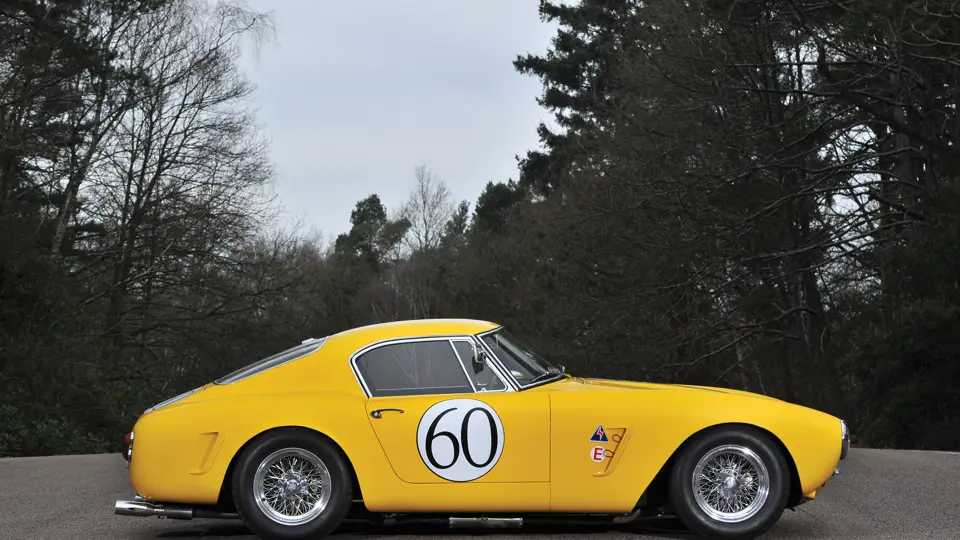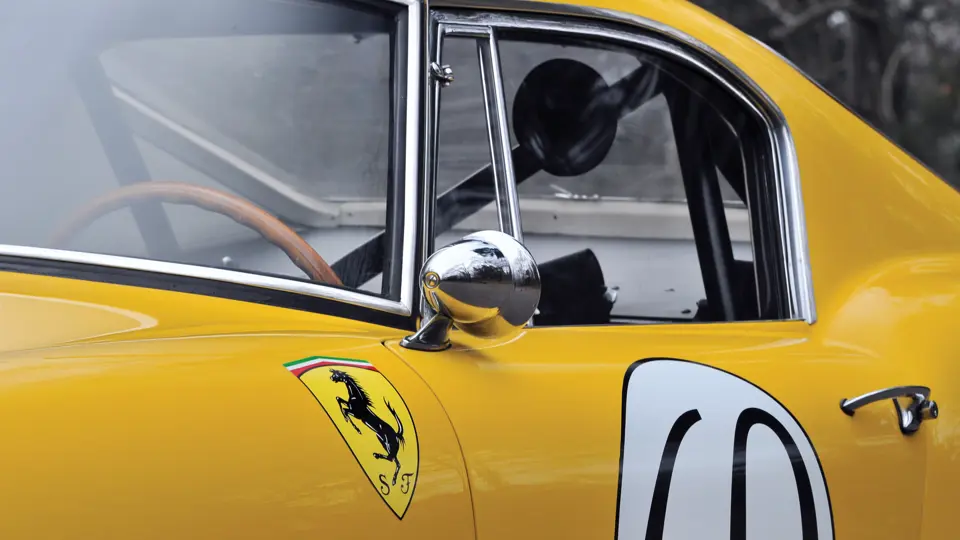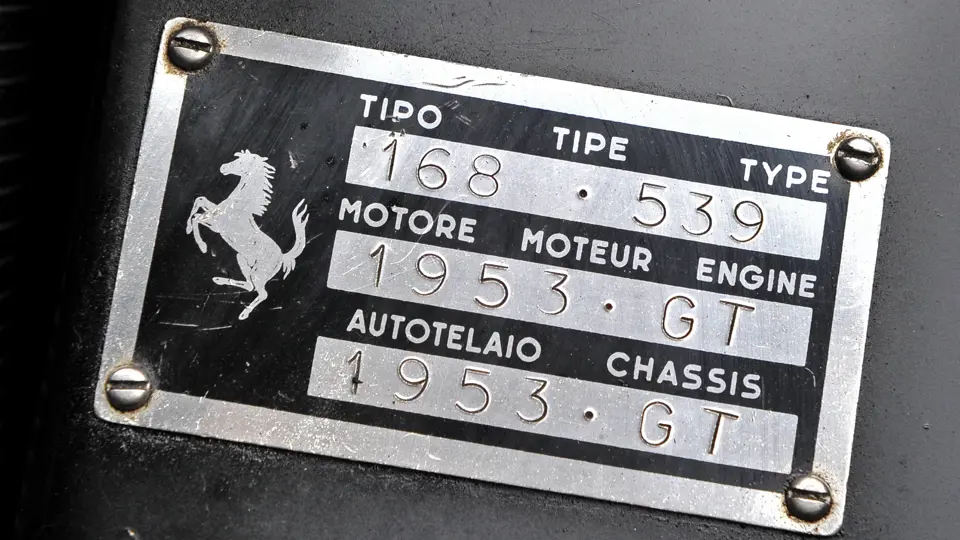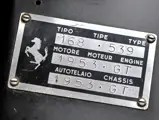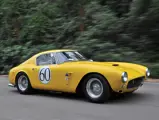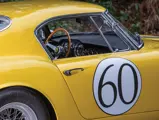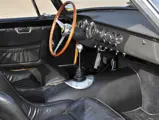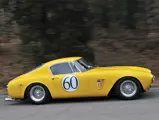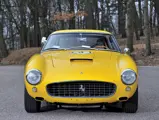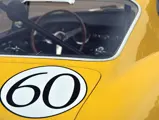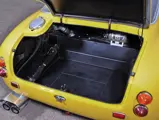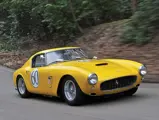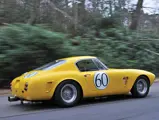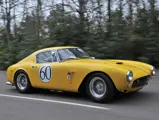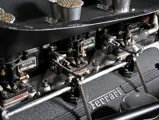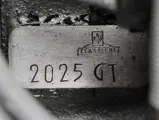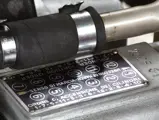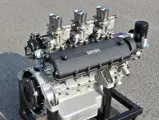
1960 Ferrari 250 GT SWB Berlinetta Competizione by Scaglietti
{{lr.item.text}}
Estimate Available Upon Request | Not Sold
{{bidding.lot.reserveStatusFormatted}}
- One of about 45 aluminium-bodied competition versions produced in 1960
- Restored by renowned experts at Motion Products Inc.
- A frequent vintage racing competitor; campaigned at the Silverstone Classic and Goodwood Revival
- Eligible for the Tour Auto and Le Mans Classic
- Uno di 45 esemplari in versione "Competizione" realizzati con carrozzeria in alluminio nel 1960
- Restaurata da rinomati esperti presso la Motion Products Inc.
- Auto iscritta regolarmente a gare storiche, con partecipazioni alla Silverstone Classic e al Goodwood Revival
- Eligibile per il Tour Auto e Le Mans Classic
280 bhp, 2,953 cc SOHC Colombo V-12 engine with three Weber 40 DCL6 carburettors, four-speed manual transmission, independent front suspension with parallel A-arms and coil springs, solid rear axle with semi-elliptical leaf springs, and four-wheel Dunlop disc brakes. Wheelbase: 2,400 mm.
280 cv, motore V-12 Colombo da 2.953 cc con singolo albero a camme in testa e tre carburatori Weber 40 DCL6, trasmissione manuale a quattro velocità, sospensioni anteriori indipendenti a triangoli sovrapposti e sospensioni elicoidali, ponte posteriore rigido con balestre semi ellittiche e quattro freni a disco Dunlop. Passo: 2.400 mm
MARANELLO’S FINEST DUAL-PURPOSE GRAND TOURER
By 1959, Ferrari had established its dominance in sports car racing on a global scale. Those cars adorned with the Prancing Horse were handily taking home trophies at races around the globe and at the highest levels of motorsport. Enzo Ferrari was looking to keep his cars at the top of the podium for the next decade and to continue to do battle with the likes of Aston Martin and Jaguar. In the GT category, Ferrari was truly second to none, and its 250 GT long-wheelbase Berlinetta was regarded as the finest dual-purpose GT car money could buy. It was versatile enough to be driven on public roads to an event, raced in anger to victory, and driven back home all in the same day. Of course, with a design by Pinin Farina and coachwork by Scaglietti, these cars looked just as good stationary as they did at speed. Ownership of a 250 GT Berlinetta was the dream of any motoring enthusiast.
The newest competition-ready Berlinetta took the reins from the aging LWB “Tour de France” and was introduced in 1959 at the Paris Salon. This new car boasted bodywork similar to the outgoing TdF and “interim” Berlinetta, but its new chassis had a wheelbase 200 millimetres shorter than its predecessor, leading the cars to be differentiated by enthusiasts as passo lungo, or LWB, for the long-wheelbase examples, and passo corto, or SWB, for the new Berlinettas.
Save for the change in wheelbase, the new Tipo 539 chassis remained quite similar to the older Tipo 508 chassis, aside from some additional tubing. Likewise, the new Tipo 168 engine was developed from the Tipo 128 engine that was found in the TdF, and it could produce around 280 horsepower in competition guise. This would also be the first Ferrari to be fitted with disc brakes as standard. Customers could order their new 250 GT Berlinettas in either right- or left-hand drive, could specify an uprated competition engine, and could add other custom touches to further personalise their cars.
CHASSIS NUMBER 1953 GT
The 250 GT Competition Berlinetta presented here, chassis number 1953 GT, has been graced with aluminium coachwork that had been hand-crafted by Scaglietti, and it was originally finished in Grigio Scuro (13420 M) with a Rosso leather interior, according to factory records. The car, one of forty-five examples bodied in aluminium that year, was intended to be a race-ready example, as its lightweight coachwork shaved precious grams off its curb weight. Additionally, the engine produced 258.5 horsepower at 7,500 rpm, thanks to 10-millimetre lift camshafts and 9.6:1 compression ratio pistons, according to the car’s build sheet
However, chassis number 1953 GT would not see the crucible of motorsport in its early days, as it was delivered new to Cesare Marchi, a doctor residing in Florence, Italy, who likely used his new Berlinetta Competizione on the street, just as he did his previously owned 250 GT TdF, which had similarly never seen competition.
The Ferrari remained in Italy until 1972, when it was acquired by Dr Hamilton Kelly, of California, and it was later sold to Lloyd Hopkins, also of California. The car was later involved in a road accident, which damaged the passenger-side front wing and lower grille area. Following the incident, it was determined that the damages would cost in excess of $1,000 to repair. At the time, its owner felt that the car’s financial value did not justify immediate repairs. The car was then sold to Dr Cliff D. Cummins, of Riverside, California, who then passed it on to Robert Binswanger, a citizen of Switzerland who was living in Atlanta, Georgia. However the original engine for 1953 GT remained with Dr Cummins.
Whilst under Binswanger’s ownership, chassis 1953 GT awaited restoration, until it was finally sent to Donald Fong, who initiated the work. During this time, the 250 GT was purchased by David Livingtston, of Seattle, Washington, who sent the car to one of the very best Ferrari specialists in the country, Wayne Obry of Motion Products in Neenah, Wisconsin. Whilst there, a comprehensive restoration performed to very high standards was undertaken and the car was refinished in Giallo Fly with a black interior. During this time, Duncan Hamilton & Company in the UK sourced a Tipo 168U engine (number 5221 GT) through Terry Hoyle and Bob Houghton, which was fitted to the car. Included on file is a letter from Wayne Obry, which notes the following:
Along the way there were a few areas which needed to be replaced. As I recall, they included the lower front wings behind the wheels and the lower rear wings behind the wheels. We may have replaced one of the rockers but I don’t recall exactly. There was evidence of other minor repairs from the past but nothing out of the ordinary from other SWBs we have done. The chassis was straight with no buckles and showed no signs of previous damages or accidents.
By 1994, chassis 1953 GT was purchased by Ferrari collector Robert C. Rapp and joined his stable of historically significant and rare Ferraris in Greensboro, North Carolina. Rapp showed the car twice during his tenure, first at the International Ferrari Concours d’Elegance at the Ferrari Club of America Annual Meet in Monterey in August 1994, where it received a Second in Class, and at the following FCA Annual Meet, where it received a Silver award.
In 1996, Rapp sold the car in a deal where he took a Ferrari 333 SP as part payment, and chassis number 1953 GT was sold to Kentaro Kato, of Hokkaido, Japan, where it would remain for the next 10 years. During this time, it was displayed at the Museo del Cavallino in Hakodate City, where it attracted a lot of attention. In Japan, the car was owned by Hitoshi Oda and then Taizou Shimano, who showed the car at the 10th Anniversary Forza Ferrari Club in Japan at Suzuka. After returning to California in 2007, its Tipo 168U engine (number 5221 GT) was removed and the car was fitted with a proper competition-spec engine that had been sourced from another aluminium-bodied 250 GT Berlinetta, number 2025 GT, along with a competition ribbed gearbox (number 73) from chassis 2347 GT. It is important to note that the car includes both engines, with the correct type currently fitted (number 2025 GT), as well as a spare race-prepared Tipo 168U engine (number 5221 GT).
In 2011, this 250 GT was acquired by the current owner, who immediately had the spare engine fully rebuilt and prepared for competition by renowned historic specialists at Pearsons Engineering. The car was campaigned at a handful of high-profile historic races, where it truly excelled at the hands of former Le Mans winner Jackie Oliver, and it also made appearances with Christian Horner, of Red Bull Racing, and Gary Pearson, who are both successful drivers in their own right. It was then driven by Christian Horner and Jackie Oliver at the Royal Automobile Club Tourist Trophy Celebration during the Goodwood Revival in 2012. Oliver remained behind the wheel at the Donington Historic Festival in 2012, finishing 1st in the Pre-63 GT race. He also drove the car at the Silverstone Classic, which took place two months later. The first race of 2013 would see 1953 GT return to the Silverstone Classic in the hands of Jackie Oliver and Gary Pearson, with the pair winning the famous RAC TT. Horner and Oliver drove the car again at the Goodwood Revival in 2013, taking 10th place in the RAC TT Celebration race, which was a four-position improvement from their finish the year before. The Moss Trophy Race at the 2014 Goodwood Members Meeting was a close race between a 1953 GT and the 250 SWB GT “Breadvan”, which had Oliver behind the wheel, but it’s time was cut short by a rear tyre issue. This car’s final competitive outing for 2014 would be yet another appearance at the RAC TT Celebration Race at the Goodwood Revival.
Not only within the realm of its own marque, but also within the scope of automotive history, the Ferrari 250 GT Berlinetta Competizione is one of the finest dual-purpose sports cars ever conceived. With class wins at some of the most important events in period, including the Tour de France and the 24 Hours of Le Mans, its provenance and performance, not to mention its overall usability, are unrivalled.
As one of forty-five competition-ready, alloy-body examples, chassis number 1953 GT was born with racing in its blood, and it is only right that it continues to compete to this day. It is presented today in race-prepared condition, and it would be ideal for any European driving events, such as the Tour Auto or Le Mans Classic.
LA MIGLIORE E PIU' VERSATILE GRAN TURISMO DI MARANELLO
Nel 1959, la Ferrari aveva ormai consolidato il suo dominio nelle gare automobilistiche mondiali. Le auto che portavano il Cavallino Rampante guadagnavano facilmente successi nelle competizioni e negli eventi di più alto livello di tutto il mondo. Enzo Ferrari voleva mantenere vincenti le sue auto per un altro decennio e continuare a battagliare con marche del calibro di Aston Martin e Jaguar. Infatti nella categoria GT, la Ferrari non era seconda a nessuno e la 250 GT Berlinetta a passo lungo era considerata come la migliore e la più versatile gran turismo disponibile all'epoca. Era un'auto adatta sia per recarsi alle corse percorrendo strade pubbliche per essere guidata con decisione nelle corse verso la vittoria, per poi ripercorrere tranquillamente la strada verso casa, tutto in una sola giornata. Ovviamente queste auto erano tutte disegnate da Pinin Farina, carrozzate da Scaglietti, e si facevano ammirare sia da ferme che quando sfrecciavano ad alta velocità. Avere una 250 GT Berlinetta era il sogno di ogni appassionato di automobili.
La 250 GT passo corto fu presentata al Salone di Parigi del 1959 e doveva prendere il posto della ormai vecchia "Tour de France" a passo lungo. La Berlinetta passo corto aveva un disegno simile alla Berlinetta "Interim", ma aveva un nuovo telaio tipo 539 con un passo accorciato di 200 millimetri, cosa che portò le auto ad essere definite dagli appassionati a passo lungo o LWB e passo corto o SWB.
Al di là delle modifiche fatte alla lunghezza del passo, il nuovo telaio Tipo 539 aveva molte somiglianze al vecchio Tipo 508 eccezion fatta per alcune traverse aggiuntive. Alla stessa stregua del telaio, il nuovo motore Tipo 168 era stato sviluppato dal precedente Tipo 128 che equipaggiava la TdF, ed era in grado di produrre all' incirca 280 cavalli nelle versioni da competizione. La 250 GT Berlinetta passo corto fu anche la prima Ferrari ad essere fornita con freni a disco di serie. I clienti potevano ordinare la loro nuova 250 GT Berlinetta sia con guida a destra che a sinistra, opzionandola con il motore potenziato per le gare ed altri tocchi personali per rendere la propria auto unica.
IL NUMRO DI TELAIO 1953 GT
La 250 GT Berlinetta Competizione presentata qui, numero di telaio 1953 GT, riveste una carrozzeria in alluminio, lastrata a mano da Scaglietti e secondo i registri della Fabbrica verniciata in origine nel colore Grigio Scuro (13420 M) con gli interni in pelle di colore Rosso. La macchina era una dei 45 esemplari interamente carrozzati in alluminio prodotti nel 1960 ed era stata intesa come una versione pronto gara: la sua speciale carrozzeria alleggerita ne aveva snellito il peso complessivo. In aggiunta, stando alla foglio di montaggio della macchina, il motore produceva 185,5 cavalli a 7,500 giri, grazie alle camme con alzata di 10 millimetri e pistoni con rapporto di compressione del 9.6:1.
Inizialmente il telaio 1953GT non fu sottoposto ai rigori delle gare automobilistiche e fu consegnato nuovo a Cesare Marchi, un dottore che risiedeva a Firenza, Italia e che usava la sua Berlinetta Competizione in strada, così come aveva fatto con la 250 GT TdF, la quale non era anch'essa mai stata precedentemente usata in gara dal proprietario.
Questa Ferrari rimase in Italia fino al 1972, quando fu acquistata dal Sig. Hamilton Kelly, della California, che la vendette successivamente a Lloyd Hopkins, residente nel medesimo stato. L'auto fu successivamente incidentata e riportò danni al lato anteriore de passeggero e alla parte bassa della calandra. I danni furono stimati più di 1000 Dollari e a quell'epoca il proprietario stabilì che, dato il valore commerciale dell'auto, non valeva la pena riparare immediatamente la macchina. Essa fu poi venduta al Dottor Cliff D.Cummins di Riverside, California che la cedette successivamente a Robert Binswanger, un cittadino svizzero che risiedeva ad Atalanta in Georgia. Nonostante ciò, il motore originale della 1953 GT rimase presso il Dott.Cummins.
Mentre era sotto la proprietà del Sig Binswager, il telaio 1953 GT fu sottoposto ad un restauro, che fu eseguito da Donald Fong. In questo periodo, la 250 GT fu acquistata da David Livingston di Seattle, Washington, che mandò l'auto presso uno dei migliori specialisti di Ferrari del paese, Wayne Obry, della Motion Products di Neenah in Wisconsin. Una volta giunta li, fu sottoposta ad un restauro meticoloso con standard elevati e fu completata in Giallo Fly con un interno in pelle nera. Durante questo restauro, Duncan Hamilton & Company nel Regno Unito trovarono un motore Tipo 168U (numero 5221 GT) che fu installato nell'auto. Insieme alla documentazione della macchina fu inclusa una lettera di Wayne Obry, che recitava le seguenti parole:
Durante il restauro c'erano poche parti che necessitavano la sostituzione. Ricordo che queste riguardavano la parte inferiore dei parafanghi situate dietro le ruote. C'erano anche delle tracce di riparazioni minori fatte in passato, ma nulla di diverso dalle altre SWB che abbiamo restaurato. Il telaio era dritto, non presentava torsioni e non riportava segni di danni o possibili incidenti subiti.
Nel 1994 il telaio 1953 fu acquistato dal collezionista di Ferrari Robert C.Rapp ed entrò a far parte della sua collezione a Greensboro, Carolina del Nord, insieme con importanti e rare Ferrari. Rapp presentò la macchina due volte al pubblico, la prima allo International Ferrari Concours d'Elegance presso il meeting annuale del Ferrari Club of America a Montery, nell'agosto 1994, dove risultò seconda di classe, e la seconda presso lo stesso evento nell'anno successivo, dove fu insignita del Silver Award.
Nel 1996, Rapp vendette la macchina ricevendo una 333 SP come parte del pagamento. Fu cossì allora che il telaio numero 1953 GT passò nelle mani di Kentaro Kato di Hokkaido, Giappone, con cui rimase per 10 anni. In questo periodo, fu esposto al Museo del Cavallino presso Hakodate City, dove attirò molte attenzioni da parte del pubblico. Sempre in Giappone, la macchina passò prima nelle mani di Hitoshi Oda e poi di Taizou Shimano, che la mostrarono al Decimo Anniversario del Forza Ferrari Club a Suzuka. Quest'auto fece ritorno in California nel 2007 e il suo motore Tipo 168U (numero 5221 GT) fu rimosso dalla macchina, ne ricevette uno con le caratteristiche da competizione appropriate. Quest'ultimo motore era stato preso da un'altra 250 GT Berlinetta Competizione la 2025 GT. E' importante notare che la macchina venne fornita di entrambi i motori: Nella macchina, e’ presente il motore Berlinetta Competizione (numero 2025 GT); ed a parte, verra consegnato il motore tipo 168 U (numero 5221 GT) elaborato per le gare.
Nel 2011 questa 250GT venne acquistata dall'attuale proprietario, che fece immediatamente revisionare il motore di riserva e lo preparò per le gare affidandolo al noto specialista di auto storiche Pearsons Engineering. La macchina partecipò a diverse gare storiche di alto livello, dove ottene grandi risultati nelle mani del vincitore della 24 ore di Le Mans Jackie Oliver. Fu successivamente condotta da Christian Horner, della Red Bull Racing e da Gary Pearsons, entrambi ottimi piloti.
Quest'auto fu guidata da Christian Horner e Jackie Oliver al Royal Automobile Club Tourist Trophy Celebration durante il Goodwood Revival nel 2012. Oliver guidò la macchina al Dognington Historic Festival nel 2012, terminando la gara in prima posizione nella classe Pre-63 GT. Due mesi dopo, venne pilotata alla Silverstone classic. Sempre nelle mani di Oliver in coppia con Gary Pearson, la 1953 GT tornò nel 2013 alla Silverstone Classic, conquistando il famoso RAC TT. Horner ed Oliver la guidarono ancora al Goodwood Revival nello stesso anno, finendo al decimo posto alla RAC TT Celebration Race, il che migliorò di quattro posizioni il risultato ottenuto nella edizione dell'anno precedente. La Moss Trophy Race tenutasi all'edizione 2014 del Goodwood Members Meeting vide una dura battaglia fra la 1953 GT e la 250 SWB GT "Breadvan", pilotata da Oliver, che purtroppo non riuscì a finire la gara per noie ad un pneumatico posteriore. L'ultima apparizione del 2014 per questa macchina in veste da concorrente fu alla RAC TT Celebration Race al Goodwood Revival.
Essendo uno dei quarantacinque esemplari Competizione in alluminio, il numero di telaio 1953 GT nacque per correre ed è giusto che continui a competere anche ai giorni nostri. Qui e' presentata nella configurazione da gara ed è l'ideale per qualsiasi evento in Europa, così come il Tour Auto o Le Mans Classic.
La 250 GT Berlinetta Competizione è una delle migliori e più versatili Gran Turismo mai fatte non solo nella storia della Ferrari, ma dell'automobilismo in generale. Avendo riportato vittorie di classe nelle più importanti gare della sua epoca, incluso il Tour de France e la 24 Ore di Le Mans, la sua indole e performance, senza contare la versatilità, sono senza rivali.




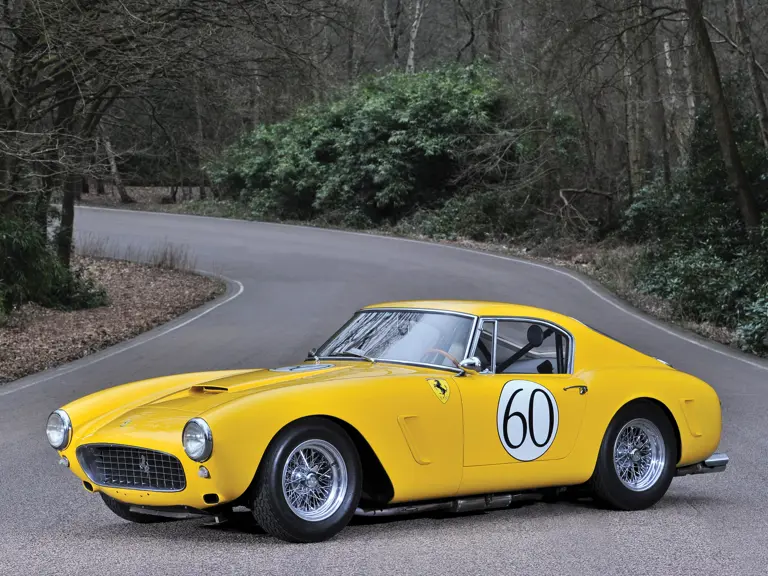
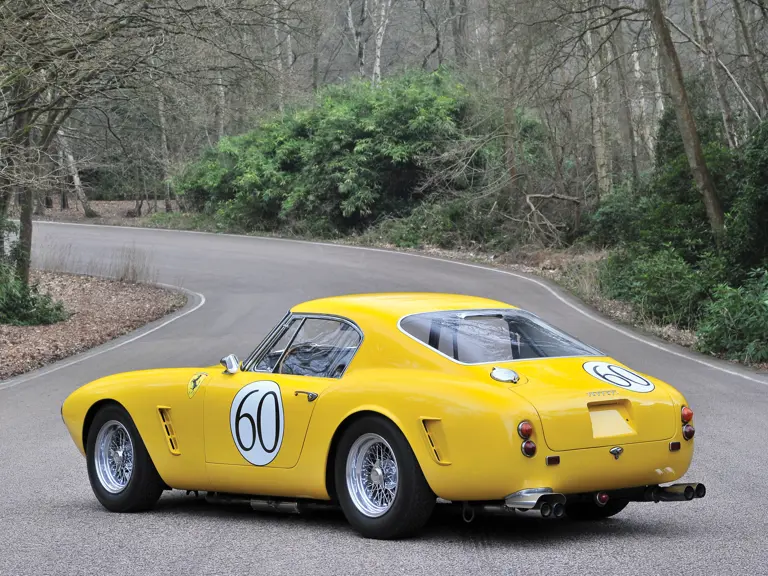
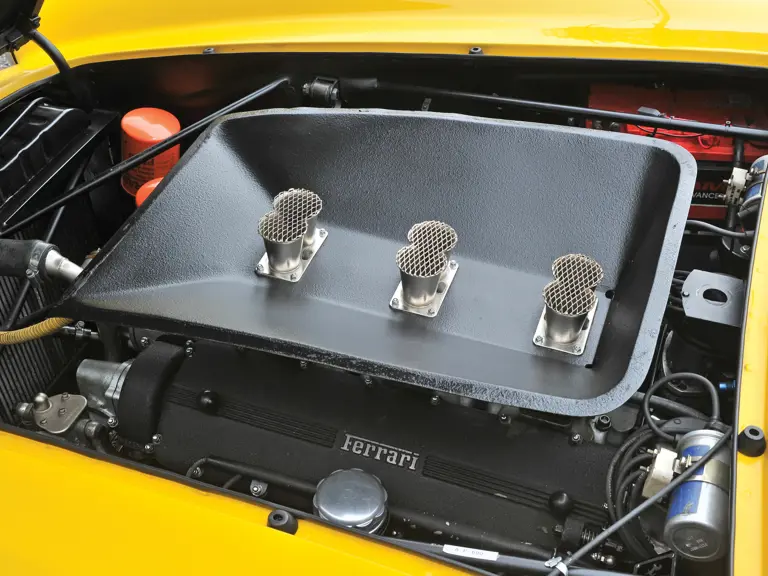
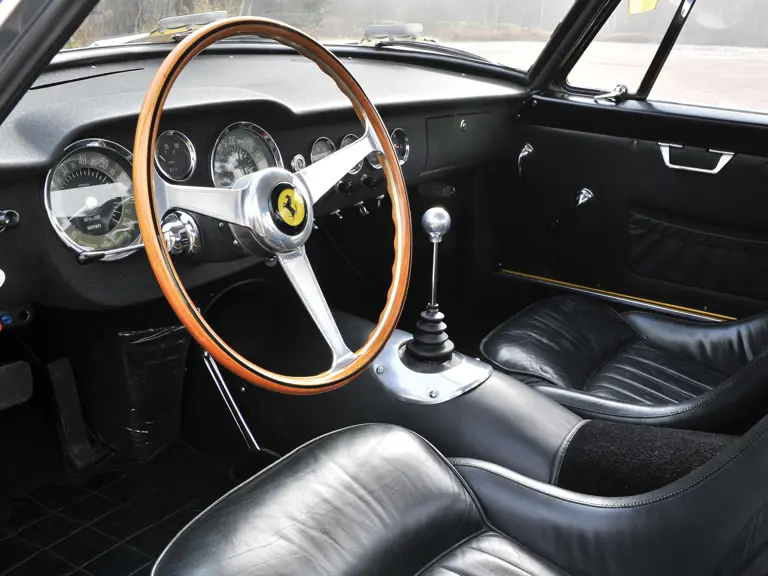
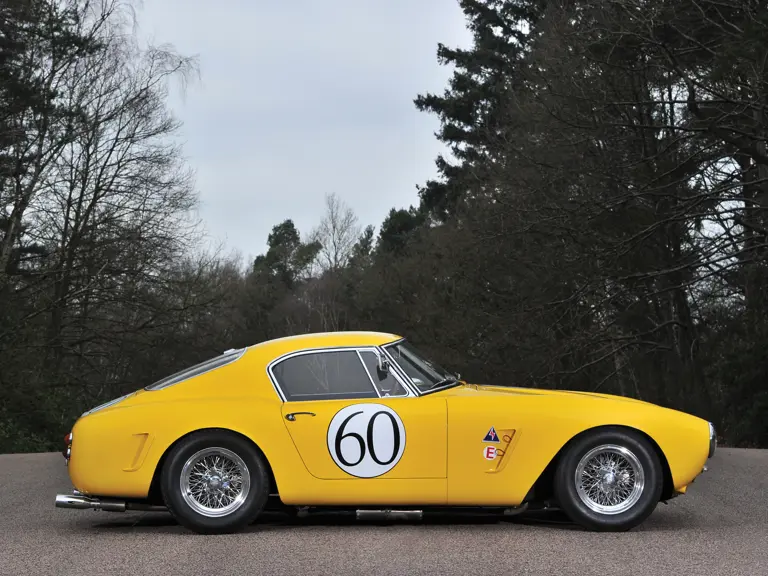
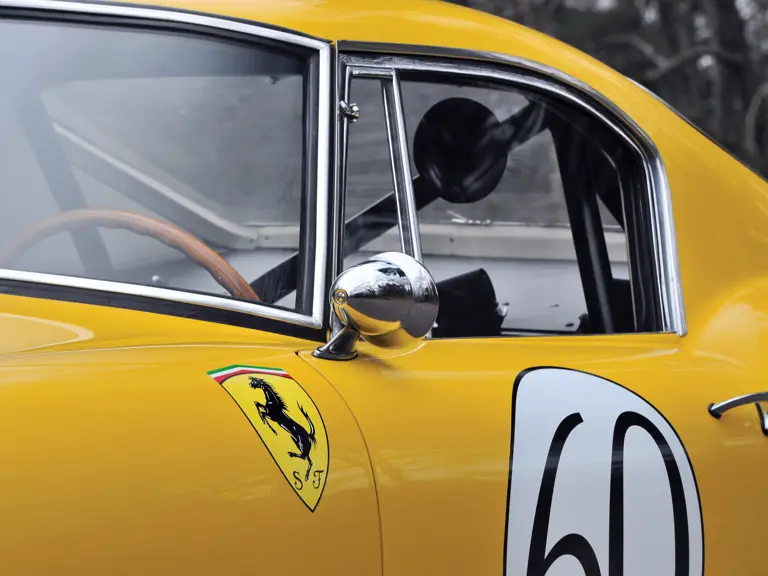
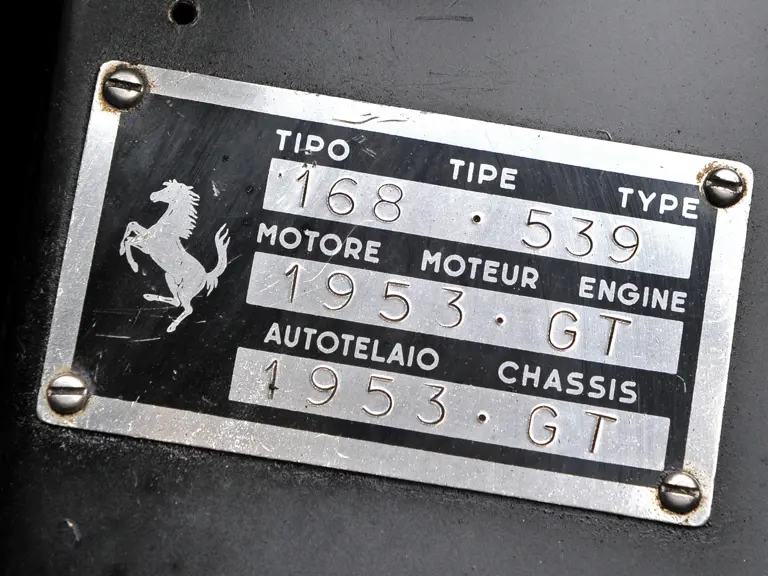
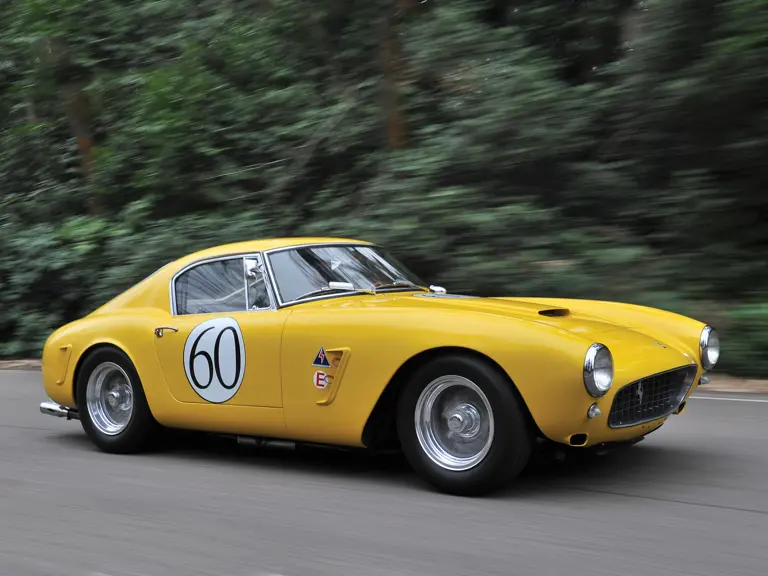
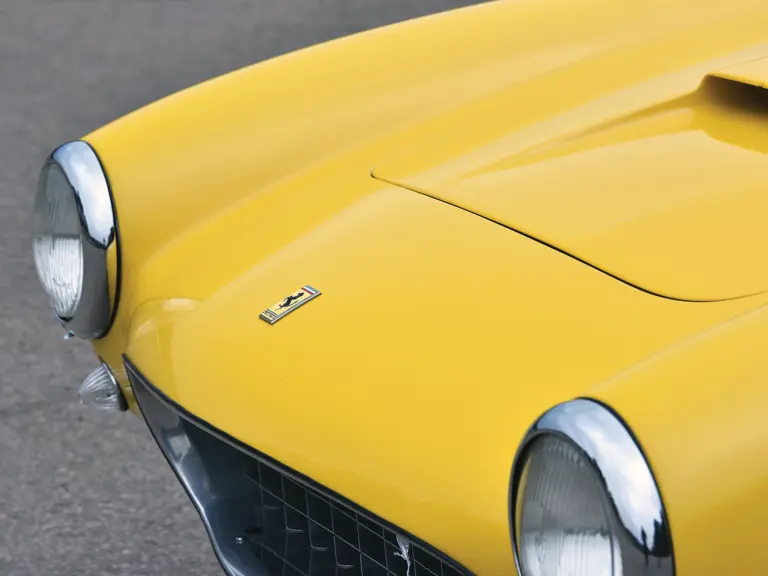
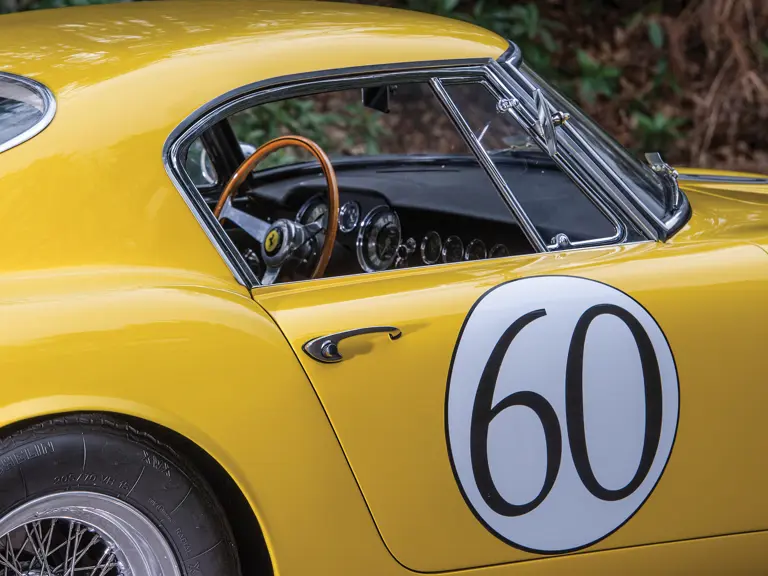
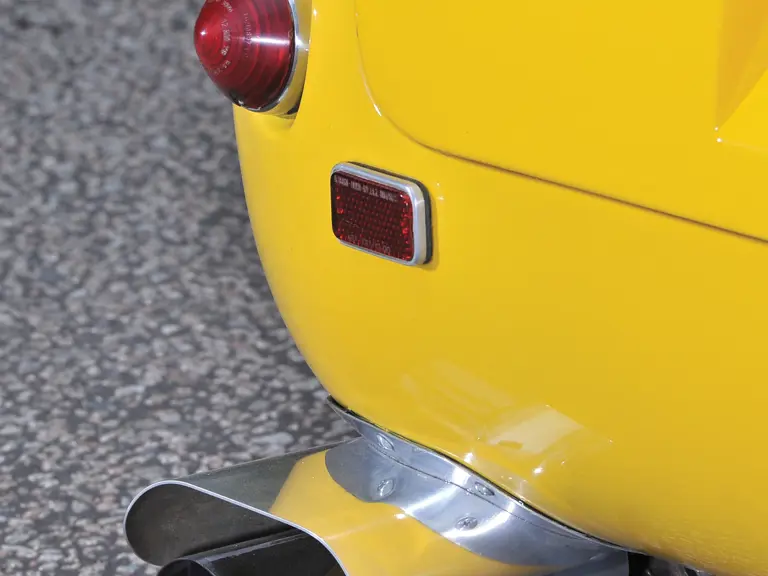
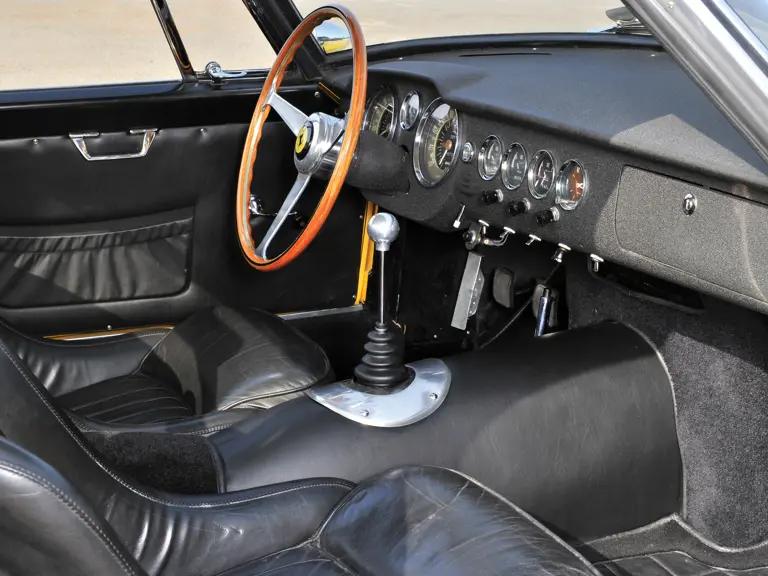

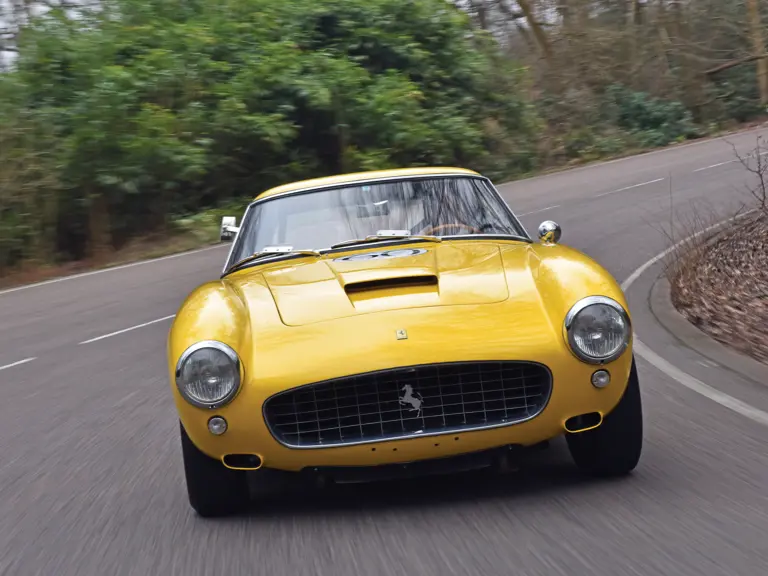
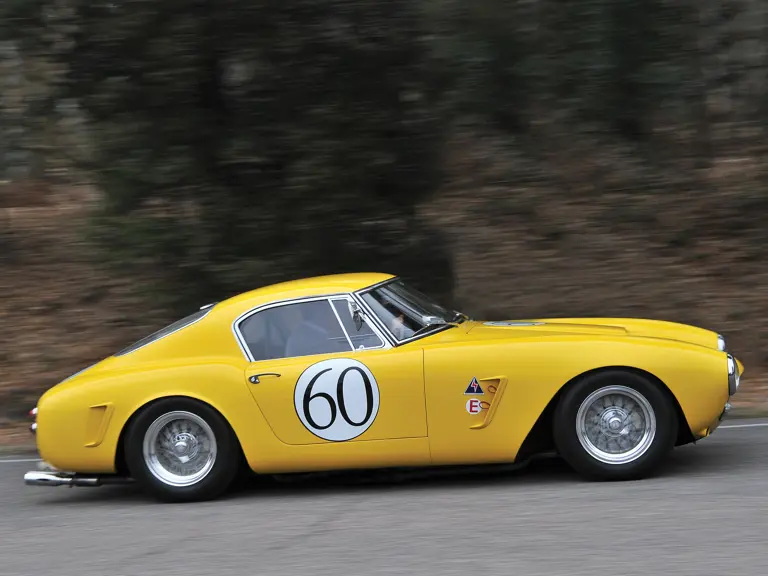
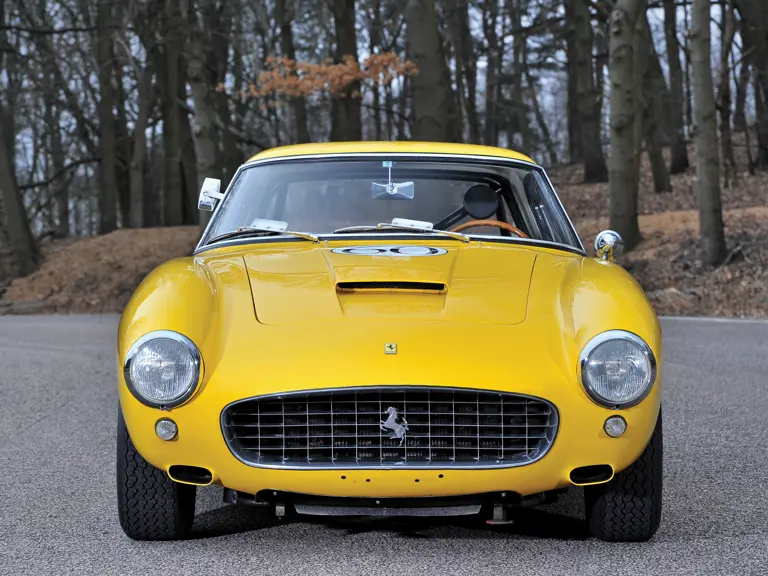

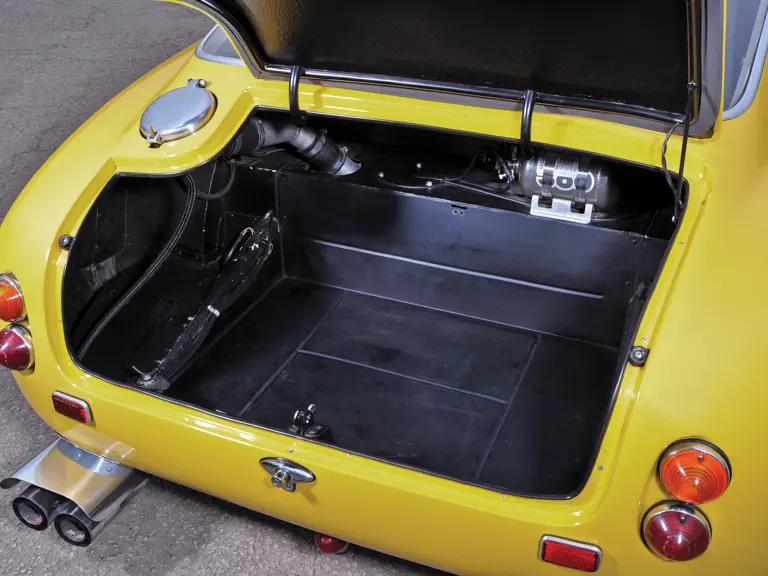

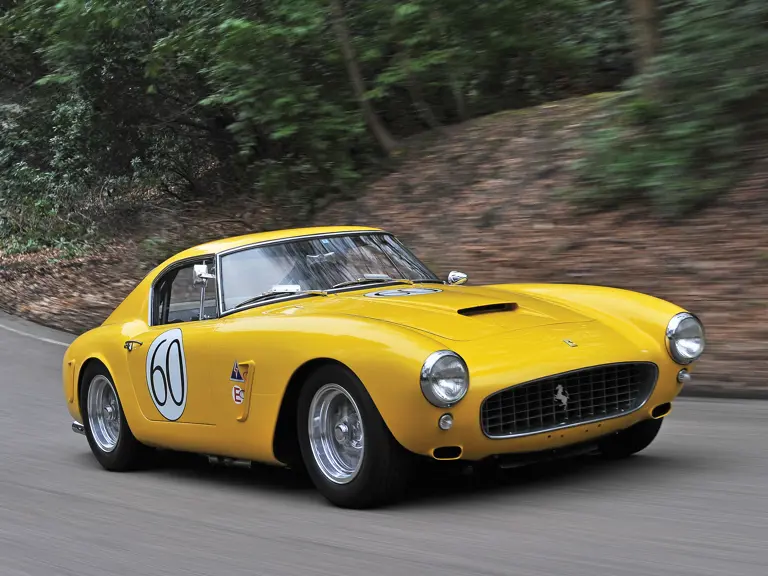
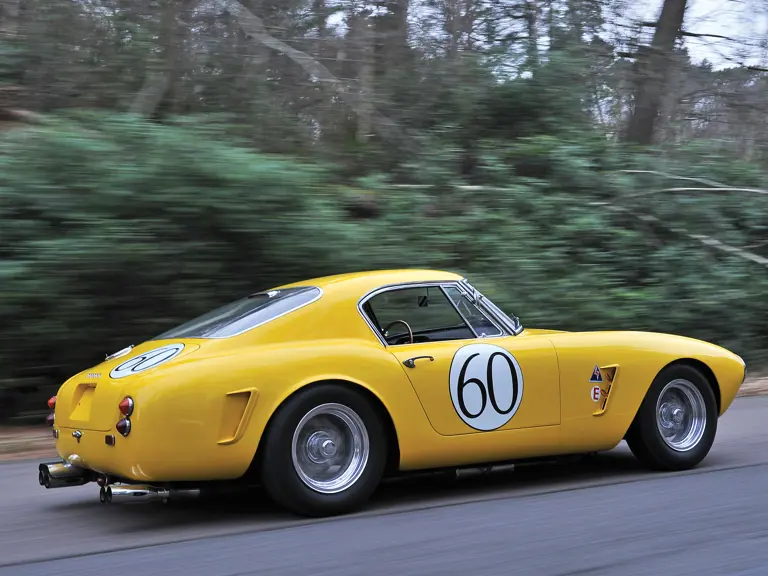
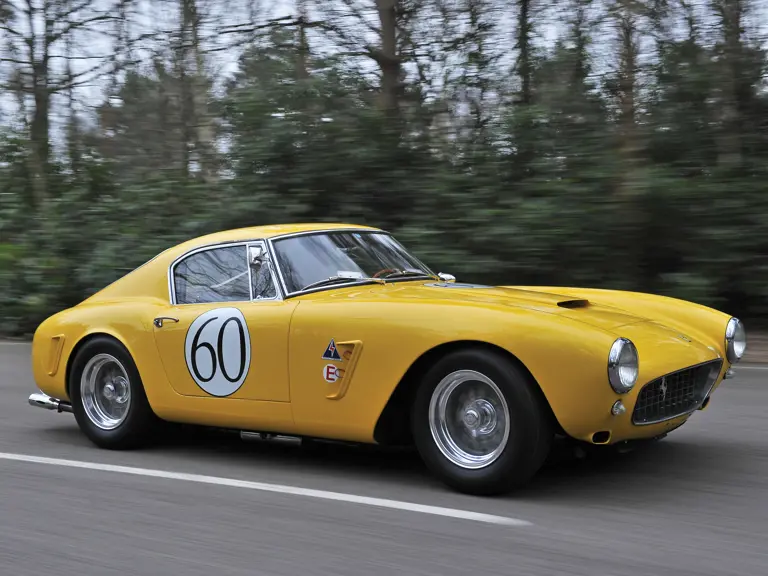
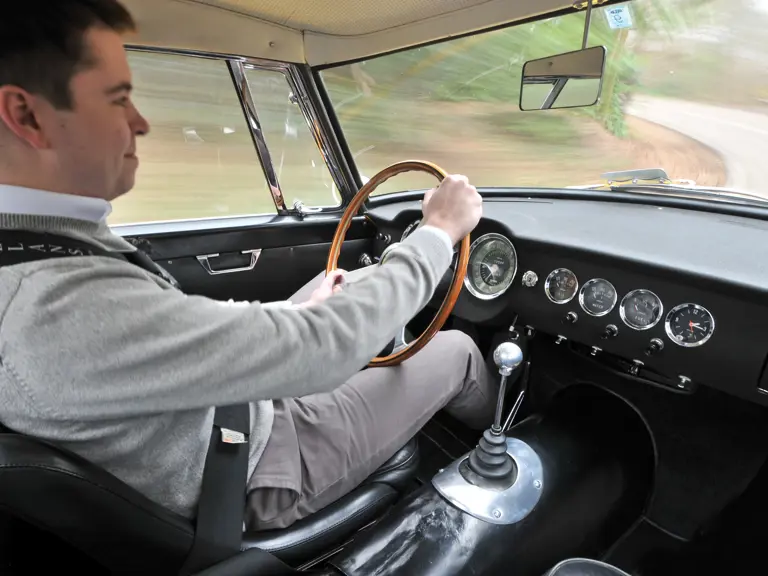

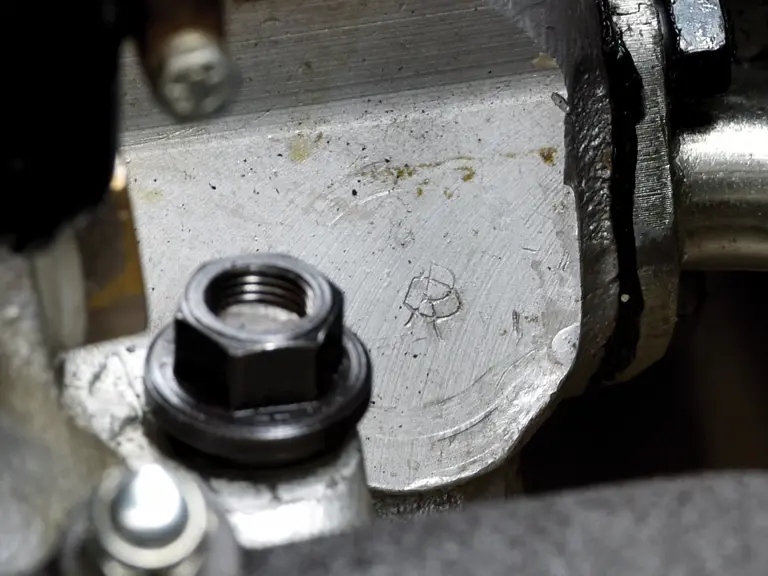
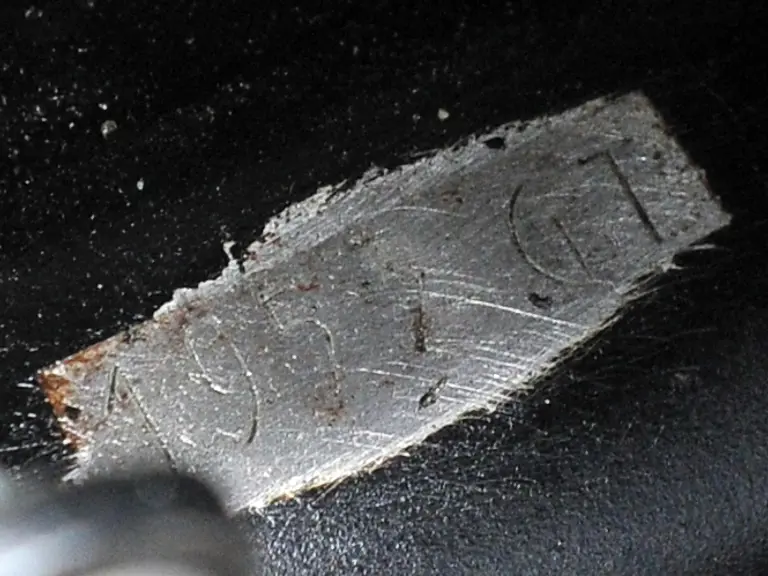
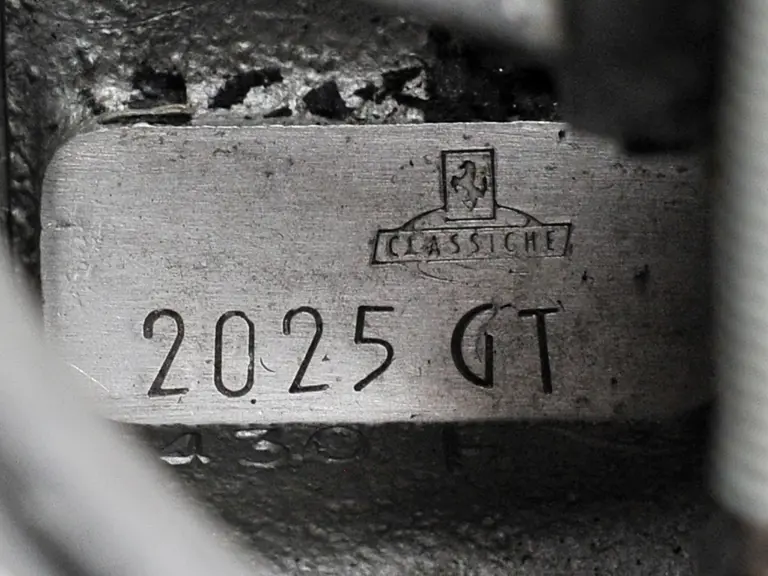
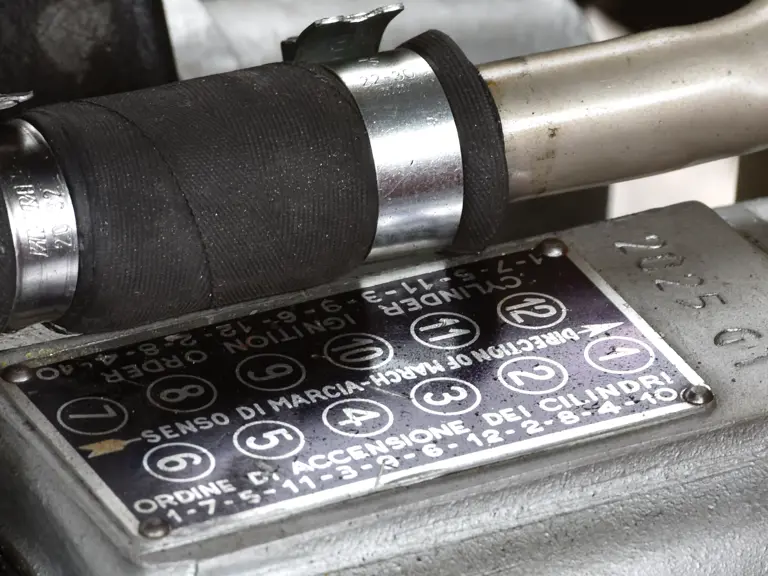

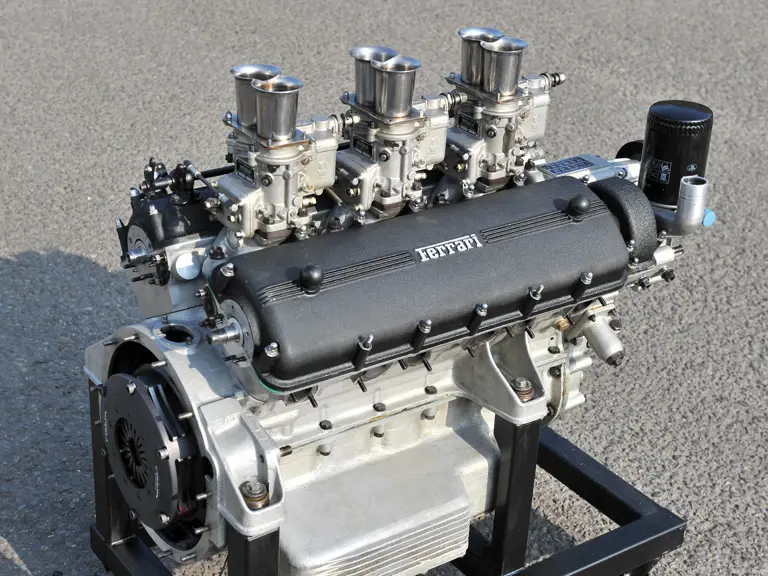
 | Cernobbio, Italy
| Cernobbio, Italy
